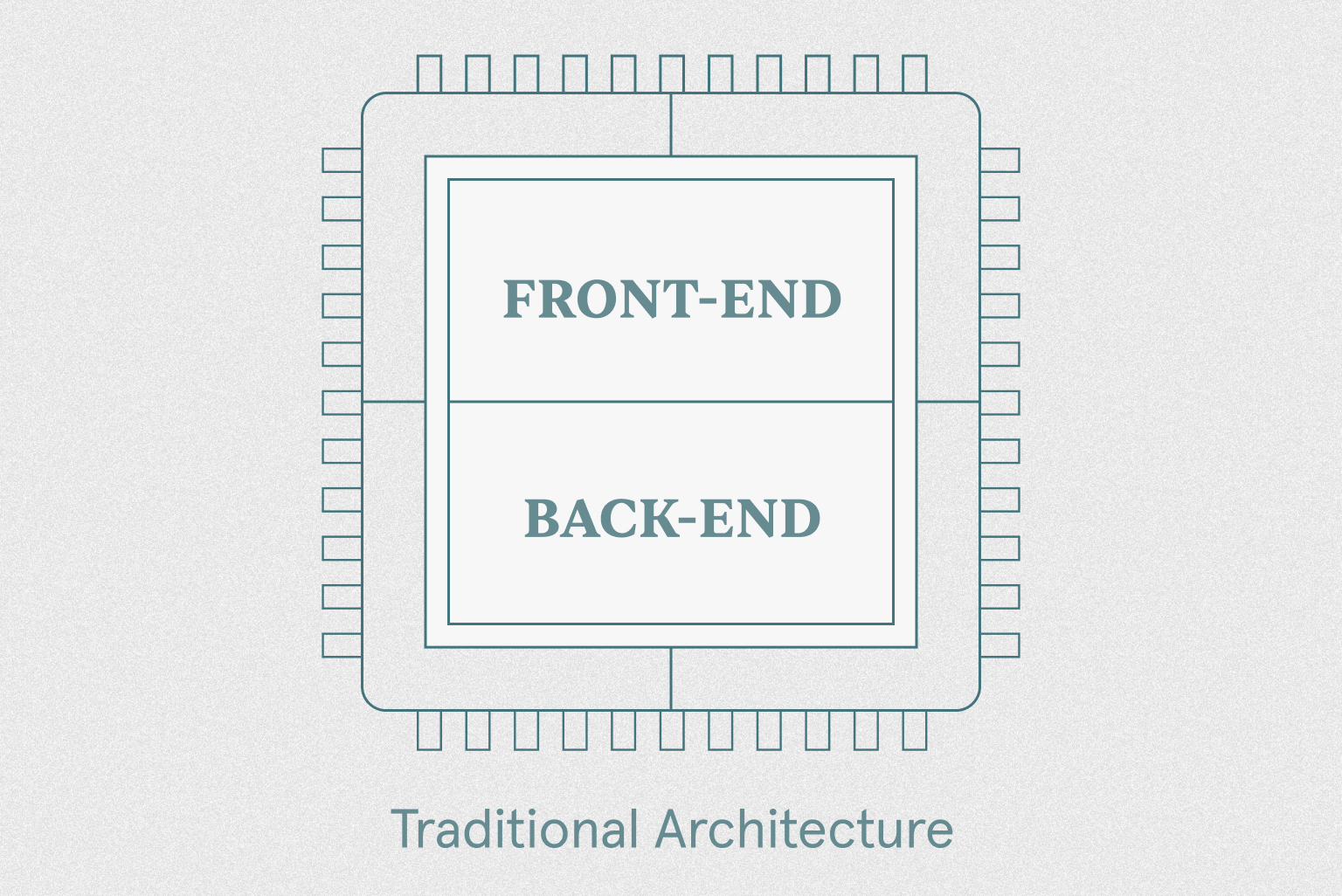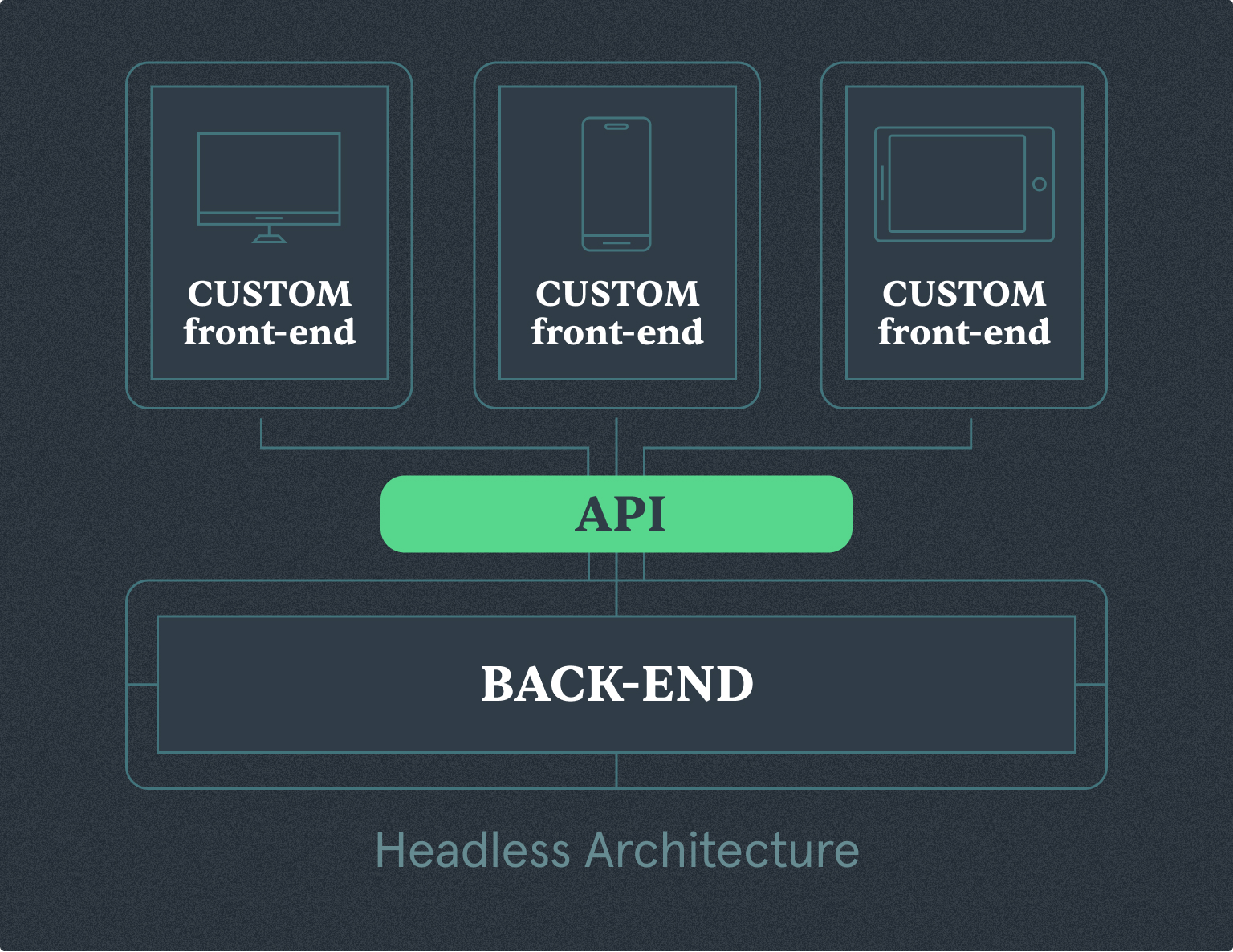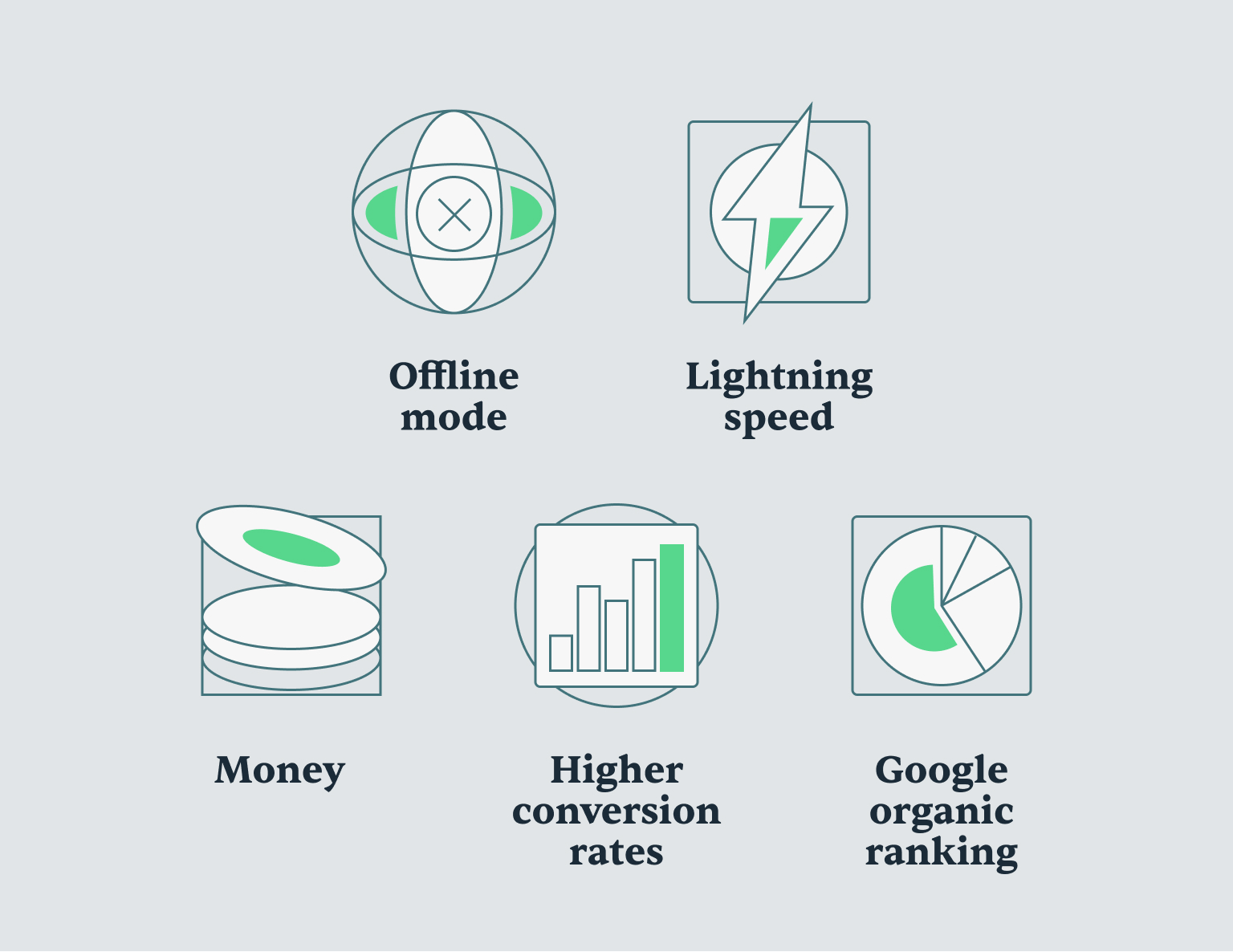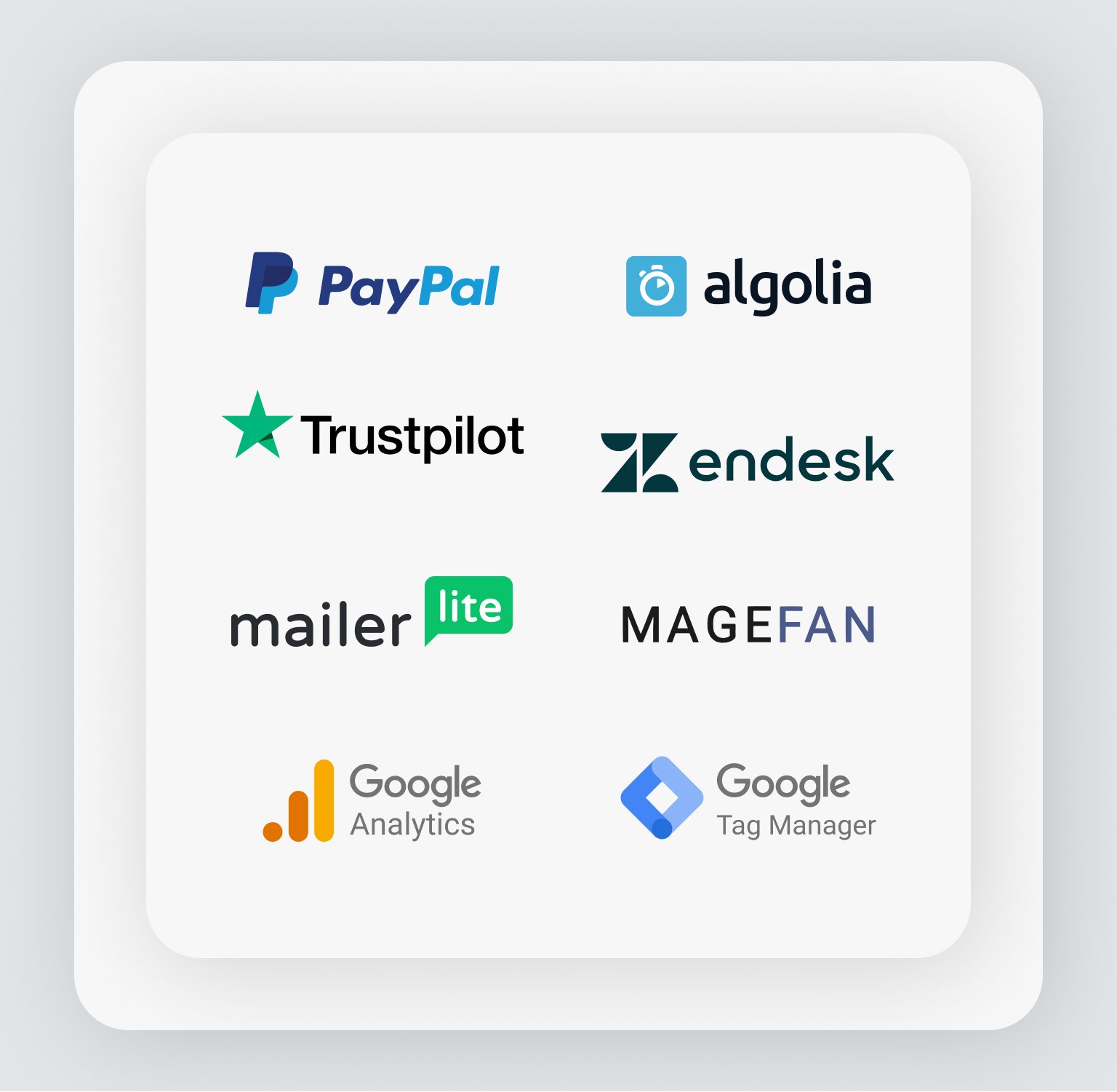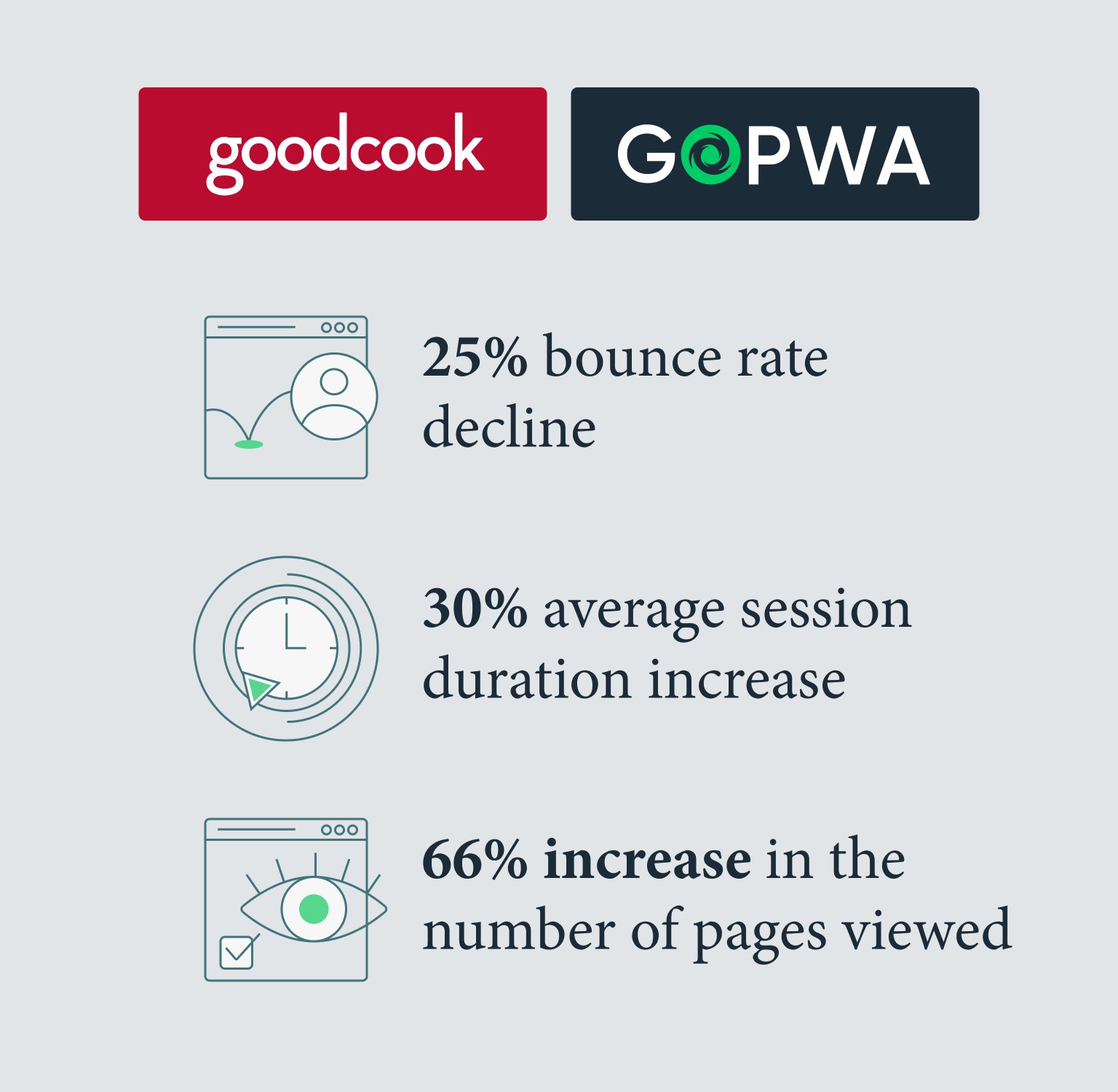Headless is the term used to describe website architecture. It separates frontend from backend to maximize flexibility and customization capabilities.
You’ve probably heard that eCommerce is moving towards headless.
While the word is gaining traction, should you explore headless Magento or ignore another buzzword?
This article sheds light on Magento headless architecture, explains its pros and cons, and why companies are adopting it:
- Headless Magento vs. monolithic architecture
- Pros and cons of Magento headless architecture
- Why companies are moving headless
Dive right in to learn more about Magento 2 headless PWA.
Development Get a robust PWA
Supercharge your eCommerce efforts with superb UX and ‘superfast’ speed. Build an eCommerce PWA from scratch or save time and money using GoPWA Storefront.
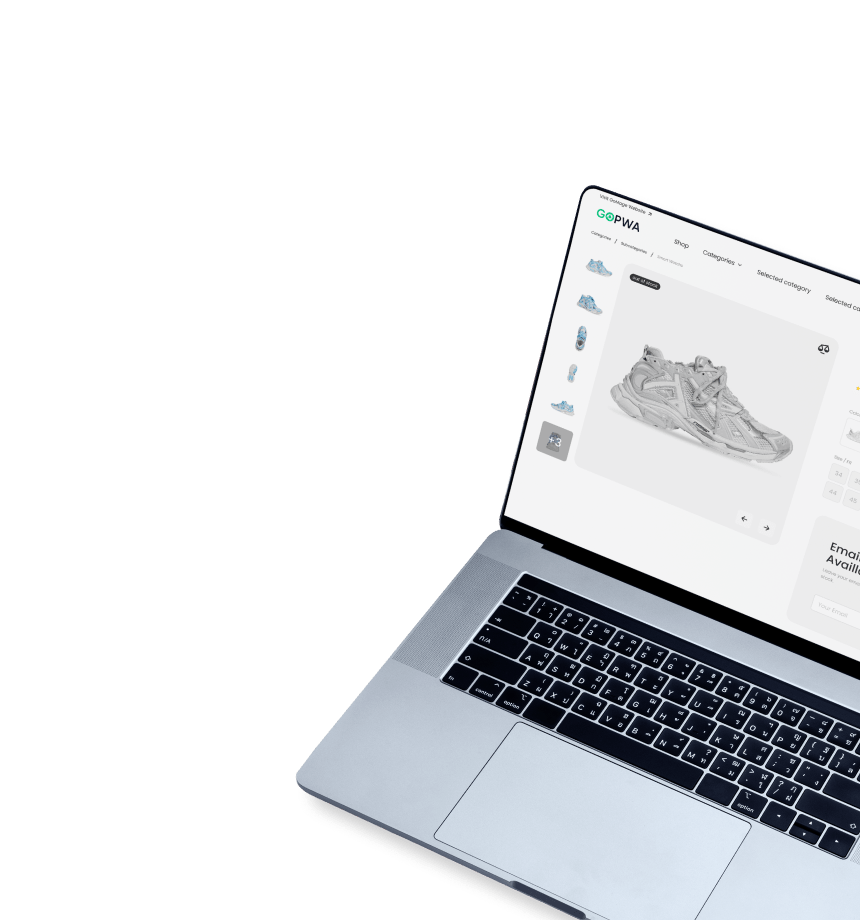
Monolithic vs. Headless Magento: Key Differences
Slow website speed. Low conversions. Poor mobile performance.
These are some of the most widespread paint points among Magento store owners. Outdated monolithic architecture is one of the reasons why performance tuning, mobile optimization, and conversion boosting techniques fail to help.
Monolithic Architecture
Monolithic architecture is like a building. You can’t take out one brick without impacting the whole construction. The same goes for eCommerce websites built with a monolithic approach.
The frontend (‘head’) and backend of such websites are interconnected. A change to one of them affects the other.
Nowadays, the vast majority of eCommerce stores, including those on Magento, operate on monolithic architecture. However, traditional architecture can’t meet the ever-changing business needs and customer demands.
Monolithic architecture has a number of drawbacks.
- Slow website performance
Monolithic eCommerce websites are notorious for being slow on mobile. Whenever a customer lands on the website, the frontend must fetch an HTML document from the backend. As a result, websites don’t show great speed results, especially on mobile and even the best Magento speed optimization techniques won’t work sometimes.
- Poor customization & scaling
With monolithic architecture, adding a new button requires the corresponding changes to the backend code. You’ll need both front-end and back-end developers working on the task. Over time, the codebase of the website grows, directly affecting performance.
- Single front-end for all devices
Today, you need a website to perform well across desktops, smartphones, tablets, and even smartwatches.Monolithic architecture doesn’t allow you to create separate frontends for different devices. You have one frontend design for a respective backend. This design is made responsive to look well across all devices.
In reality, the header of your website may take up half of the screen on mobile or a banner, that is supposed to generate more sales, may display incorrectly on tables turning customers away. And you can do little to nothing to fix it.
Headless Magento Architecture
Magento headless architecture decouples backend from frontend.
It relies on three independent pillars:
- Frontend (or several frontends)
- Backend
- API (which serves as a communication layer between frontend and backend)
As a result, every backend can have a few frontends, for example, a separate frontend for desktop and mobile devices.
Independence of frontend from backend is one of the main reasons merchants are interested in Magento 2 headless PWA. Thanks to its decoupling, headless Magento offers numerous advantages.
- Faster speed
Splitting the backend and frontend makes a website more lightweight.
Instead of generating the HTML on the backend and sending it to the frontend in front of users, the website requests and receives the dynamic data only. When customers navigate the website, header, footer, media and other static elements that remain unchanged aren’t rendered every time.
The faster response time across all devices is the main benefit. As you might already know, website speed and customer experience are interconnected notions today. Most customers bounce after waiting only 3 seconds for a website to load.
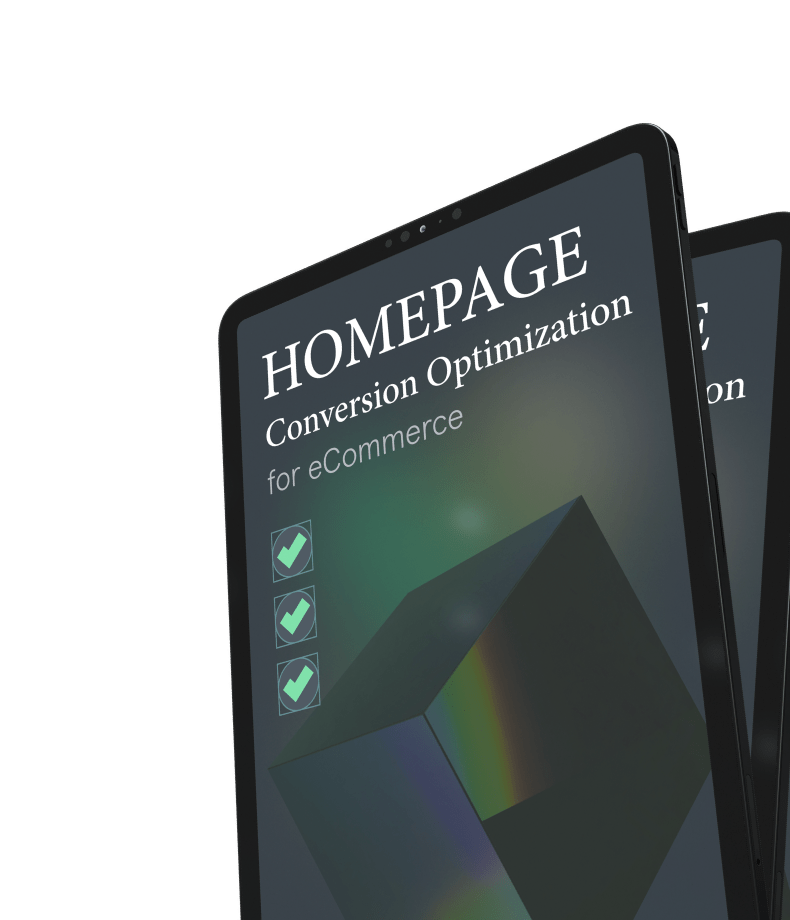
- Customization freedom
Magento is a platform that relies heavily on customizations. With backend and frontend coupled, one change to the frontend can lead to bugs and errors.
When the two parts are decoupled, working on customizations becomes much easier. You can make changes to the frontend without worrying that it might ruin your backend. Also, different teams can work on different parts of website functionality without conflicts between features.
- Separate frontends for different devices
The headless approach allows you to create separate frontends for different devices. Usually, headless Magento solutions have at least two storefronts – one for desktop and one for mobile. Better customer experience, lower bounce rate and higher conversion are among the benefits of such an approach.
- Omnichannel experience
As you can create an unlimited number of ‘heads’, the omnichannel experience moves to a new level, such as smartwatches, IoT devices, etc.
With headless Magento, you can create a single admin dashboard to upload and manage content across all ‘heads’. This way, you achieve content unification and a truly omnichannel customer experience across all platforms and devices.
You can also create different frontends for different customer groups, providing a high level of personalization.
- Ease of migration
If you already have a Magento 2 website, it won’t take long to migrate to a headless architecture. You can seamlessly migrate all your data from the old platform to a Magento headless solution, integrate it with the necessary third-party solutions and enjoy the freedom provided by the headless architecture.
Monolithic architectures are still quite popular, as they are doing their job. Still, their maintenance becomes more challenging and limiting for businesses. Headless Magento allows merchants to keep up with the latest trends and build fast eCommerce storefronts that offer seamless customer experience, a high level of customization and personalization.
Magento 2 Headless PWA: Why It’s Worth Exploring
So, how can you make your Magento website headless?
Magento 2 headless PWA is one of the possible solutions.
Magento PWA is one of the most popular technologies that rely on the headless principle. A progressive web application replaces the original frontend and connects with the Magento backend using the Service Worker technology for caching on devices.
Progressive web applications combine the best from mobile and the web. At first glance, a PWA looks like a traditional website. It’s ranked in Google and everyone can access it through its web address. At the same time, there is a reason why the technology has the word ‘app’ in it. You can add a PWA to the home screen of your device and it’ll act like a native application.
Key Benefits of Headless PWA for Magento 2
Magento PWA offers numerous benefits for merchants who are brave enough to adopt innovations.
- PWA saves money on development, as you don’t need to create a website and two native apps (for iOS and Android). You can create a single code base that will work across all platforms and devices. At the same time, you can upload your PWA to an app store for users to download them like a native application, adding a new customer acquisition channel.
- PWAs can work offline, which makes them great for on-the-go shopping. When customers lose internet connection, they can continue browsing your online store, enjoying an uninterrupted customer experience.
- PWAs offer better loading speed and boost conversions. For the UK brand George, PWA implementation increased conversions by 31% and reduced bounce rates by two times.
- PWA improves organic ranking thanks to faster loading speed, since Google loves fast websites with great customer experience and shares the love with PWAs. After all, Google created the PWA technology and stands behind its fast growth. PWAs built using best practices have no problems meeting the latest Google requirements and ranking updates, leading to higher positions in search results. More traffic means more visitors and more opportunities to convert them into customers.
Why Build a PWA with GOMAGE
Let’s be honest.
If you decide to go the PWA way, you won’t probably build it yourself. You’ll need to hire experts to build a progressive web application. You can go out there and explore Clutch or Adobe Solution Partner Directory to find a development vendor there or get in touch with GOMAGE to get a free consultation.
Why should you work with us?
4 years of experience in PWA development
And over 11 years in Magento development. We’ve been working with Magento PWA Studio since its release in 2018 and have accumulated a ton of experience. Our developers worked at Magento and brought the best Magento development practices to the table to help our clients build fast and highly customizable eCommerce storefronts.
In-house dedicated PWA division
Many Magento development companies take on PWA projects just to test out the technology. In most cases, they are exploring the technology and learning something new at the expense of their customers. GOMAGE has a dedicated PWA division working on PWA projects exclusively. Our developers know the ropes of Magento 2 headless and can advise the best practices from our expertise for building PWA storefronts.
Our own PWA storefront – GOPWA
Based on Magento PWA Studio, we’ve built our own PWA storefront – GOPWA. The main goal of GOMAGE PWA Storefront is to streamline the development of progressive web applications for eCommerce. We’ve packed the solution with all the features to effectively operate in the market, quickly build multiple storefronts under one admin panel and provide customers with a polished experience.
A few things that our GOPWA offers out of the box:
- Lightning-fast performance – compared with standard Magento 2 or Adobe Commerce, GOPWA loads 2,5-4 times faster.
- Lower development costs – PWA development allows you to enter mCommerce while decreasing the development budget by 20-30%.
- One-click installation – after you purchase the solution, you get access to the Installer that allows adding GOPWA to your Magento store in one click.
- Near-limitless freedom of content editing – we built GOPWA with ease of use and simplicity in mind. You can get a powerful solution that allows you to create new pages or update old ones using drag-and-drop functionality.
- Wide-ranging customization capabilities – customize the design of your store according to your brand style. You can easily change the closers, create stylesheets, and adjust gradients.
- Seamless integrations to boost sales & marketing efforts – GoMage PWA Storefront provides a number of built-in integrations, such as PayPal, Algolia, TrustPilot, Zendesk, MailerLite, Magefan Blog, Google Analytics, and others.
- Fast checkout to improve conversion rates – it won’t allow you to lose customers at the last step of the customer journey. You get access to social authentication for signups with social media and Firebase Authentication for registration with phone numbers. Guest checkout is great for those who want to make an order without creating an account.
The above list doesn’t cover all the benefits of GOPWA. We’re continuing working on our PWA storefront to expand its capabilities further. By the time you’re reading the article, we’ve probably added a new feature or two.
We deliver results
eCommerce is an extremely challenging industry and businesses are results-oriented. We don’t fail the expectations of our clients and help them get the best results with their PWAs. Just take a look at what GoodCook, one of our clients has achieved after adding eCommerce functionality to their website and turning it into a Magento 2 headless PWA.
- Bounce rates dropped by 25%
- Average session duration increased by 30%
- The number of page viewed grew by 60%
Close ties with PWA Community
We don’t just create a solution out of thin air. We work closely with the team of Magento PWA Studio to deliver the most high-on-demand features. As our GOPWA is based on Magento PWA, we concentrate our efforts on the features not available out of the box. As a result, you get much more than companies starting PWA development based on PWA Studio from scratch.
GOPWA is also known as an organizer of a GOPWA conference, where we’ve gathered the leading exports in the field to share insights with the audience.


